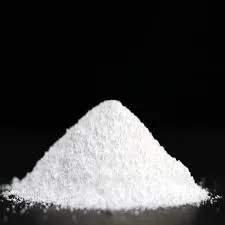The Process of Acrylamide Polymerization Reaction
Acrylamide is a versatile organic compound widely used in the production of polymers, particularly polyacrylamide. This polymerization process is both crucial and prevalent in various industries, including agriculture, water treatment, and cosmetics. Understanding acrylamide polymerization involves an examination of the reaction mechanisms, the conditions required, and the applications of the resulting polymers.
Overview of Acrylamide
Acrylamide (C₃H₅NO) is a colorless, odorless solid that is soluble in water and can be synthesized through the hydration of acrylonitrile. Its polymer, polyacrylamide, is a polymeric form that exhibits high molecular weight and varying degrees of solubility in water depending on its composition and structure. Polyacrylamide finds applications in several fields due to its excellent properties, such as its ability to form gels, its adhesion, and its effectiveness in thickening solutions.
Mechanism of Polymerization
The polymerization of acrylamide can occur via two primary mechanisms free radical polymerization and ionic polymerization. Free radical polymerization is the most common method and involves the initiation, propagation, and termination stages.
1. Initiation The polymerization process begins with the generation of free radicals, which can be achieved through various methods, including thermal decomposition or photoinitiated reactions. For acrylamide, initiators such as potassium persulfate or ammonium persulfate are frequently used. Once initiated, the radical reacts with acrylamide to form a new radical species.
2. Propagation The propagating species can then react with additional acrylamide monomers, leading to the formation of longer polymer chains. The process continues as each new radical generated can react with other monomers, thereby building the polymer structure.
3. Termination Eventually, the reaction must come to an end, which occurs through a variety of termination mechanisms, including radical combination or disproportionation. This results in the formation of a stable polyacrylamide structure.
Conditions for Polymerization
acrylamide polymerization reaction

The polymerization of acrylamide requires careful control of environmental conditions such as temperature, pH, and the concentration of initiators. Higher temperatures generally increase the rate of reaction but can also lead to unwanted side reactions or degradation of the product. Maintaining an appropriate pH is also crucial, as too acidic or too basic conditions can affect the ionization state of acrylamide and influence the polymerization outcome.
Additionally, controlling the concentration of acrylamide and the amount of initiator is essential in determining the molecular weight of the resulting polymer. A higher concentration of acrylamide typically yields a higher molecular weight polymer, which can be beneficial for specific applications.
Applications of Polyacrylamide
Polyacrylamide has a wide array of applications, largely due to its high absorbance capacity and gel-forming abilities. In the agricultural sector, polyacrylamide is used as a soil conditioner that enhances water retention, reduces erosion, and improves crop yields. In water treatment processes, it acts as a flocculant, aiding in the aggregation of suspended particles for more efficient filtration.
In the cosmetics industry, polyacrylamide is utilized as a thickening agent and emulsifier, contributing to the desirable texture and stability of personal care products. Furthermore, due to its biocompatibility, polyacrylamide is also investigated for use in drug delivery systems and tissue engineering.
Safety and Environmental Considerations
While polyacrylamide is generally considered safe for various applications, it is important to monitor acrylamide exposure, as it is classified as a potential carcinogen. Research continues to develop safer alternatives and to understand the complete environmental impact of polyacrylamide use, particularly in agricultural practices.
Conclusion
In summary, the polymerization of acrylamide is a fundamental chemical process that leads to the production of polyacrylamide, a widely used polymer with numerous applications. By understanding the mechanisms, conditions, and implications of the polymerization reaction, industries can better harness the beneficial properties of this versatile compound while ensuring safety and environmental protection. As research continues to evolve, there is great potential for innovative applications of polyacrylamide and improved methodologies for its polymerization.

